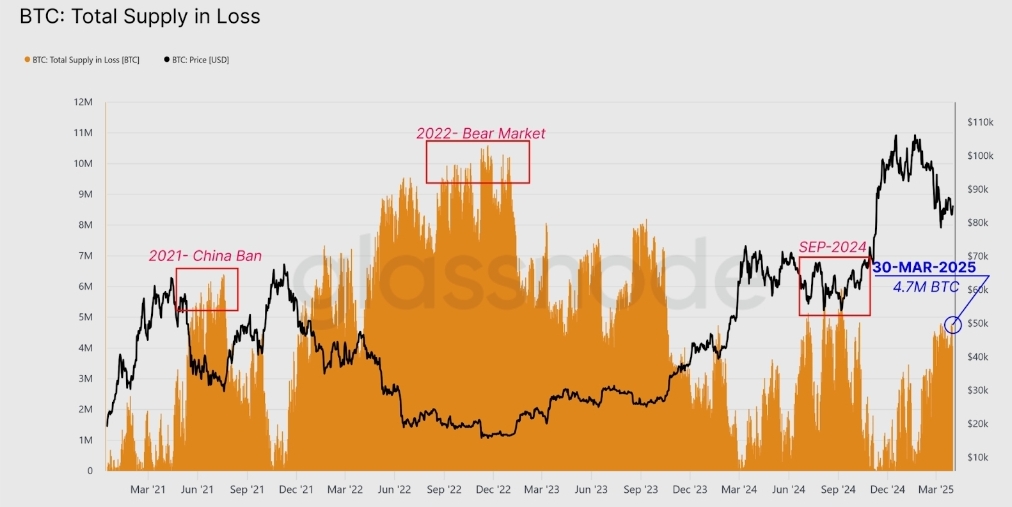The crypto market has seen significant volatility recently, with Bitcoin (BTC) at the forefront. After President Trump announced reciprocal trade tariffs, Bitcoin dropped below $83,000 and has since declined further to under $78,000.
Traders are now assessing the long-term implications of these developments, with growing speculation about how major players like the Federal Reserve and institutional investors might respond. The question remains: is this merely a temporary dip, or the beginning of a deeper shift in the crypto landscape?

Bitcoin in Turmoil: Trump’s Tariffs, Fed Moves, and Investor Anxiety
Uncertainty over global trade policies has prompted traders to quickly adjust their positions, with short-term interest rate futures now reflecting a 64.8% probability of a Fed rate cut in June—up from 60% prior to the tariff announcement.
Why does this matter? If the Federal Reserve begins cutting rates to ward off a potential recession, it could inject more dollars into the economy—potentially boosting demand for Bitcoin. Some analysts suggest that if Bitcoin manages to stay above $76,500 through mid-April, it may mark the end of the current downtrend and pave the way for a rally toward the $100K level and beyond.
At the same time, Glassnode’s latest report points to early signs of a bear market. Many holders are now facing unrealized losses, with the market displaying classic bearish characteristics: declining momentum, reduced profitability, tightened liquidity, and rising negative sentiment. Investor behavior reflects fear, with many selling at a loss.
Historically, bear markets tend to bottom out after widespread capitulation, which often signals the beginning of a recovery. As of March 30, around 4.7 million BTC are being held at a loss—suggesting the market may be nearing exhaustion, though further downside could still lie ahead.

Source: Grassnode
Technical outlook: A look at crypto market volatility?
The broader crypto market continues to respond to macroeconomic factors, with Bitcoin serving as the primary barometer for the market’s next move. If BTC manages to stabilize and push back toward the $100K mark, it could trigger a broader rally, lifting altcoins like XRP along with it. Conversely, if bearish momentum persists, further corrections may be on the horizon before any upward trend resumes.
One thing remains clear: volatility is part and parcel of the crypto space. While rumors often spark short-lived excitement, lasting value comes from confirmed developments and broader economic shifts.
As of this writing, BTC has dropped below the $78,000 level. Bearish sentiment currently dominates, with prices trading below the moving average. However, a touch of the lower Bollinger Band suggests oversold conditions, hinting at a possible rebound. The steadily rising RSI further supports this potential reversal.
Key resistance levels to watch are $84,000 and $86,500, while on the downside, support levels to monitor include $76,300 and $74,000.
Disclaimer:
The information contained within this blog article is for educational purposes only and is not intended as financial or investment advice.
This information is considered accurate and correct at the date of publication. No representation or warranty is given as to the accuracy or completeness of this information.
The performance figures quoted are not a guarantee of future performance or a reliable guide to future performance. Changes in circumstances after the time of publication may impact the accuracy of the information.

Leave a Reply